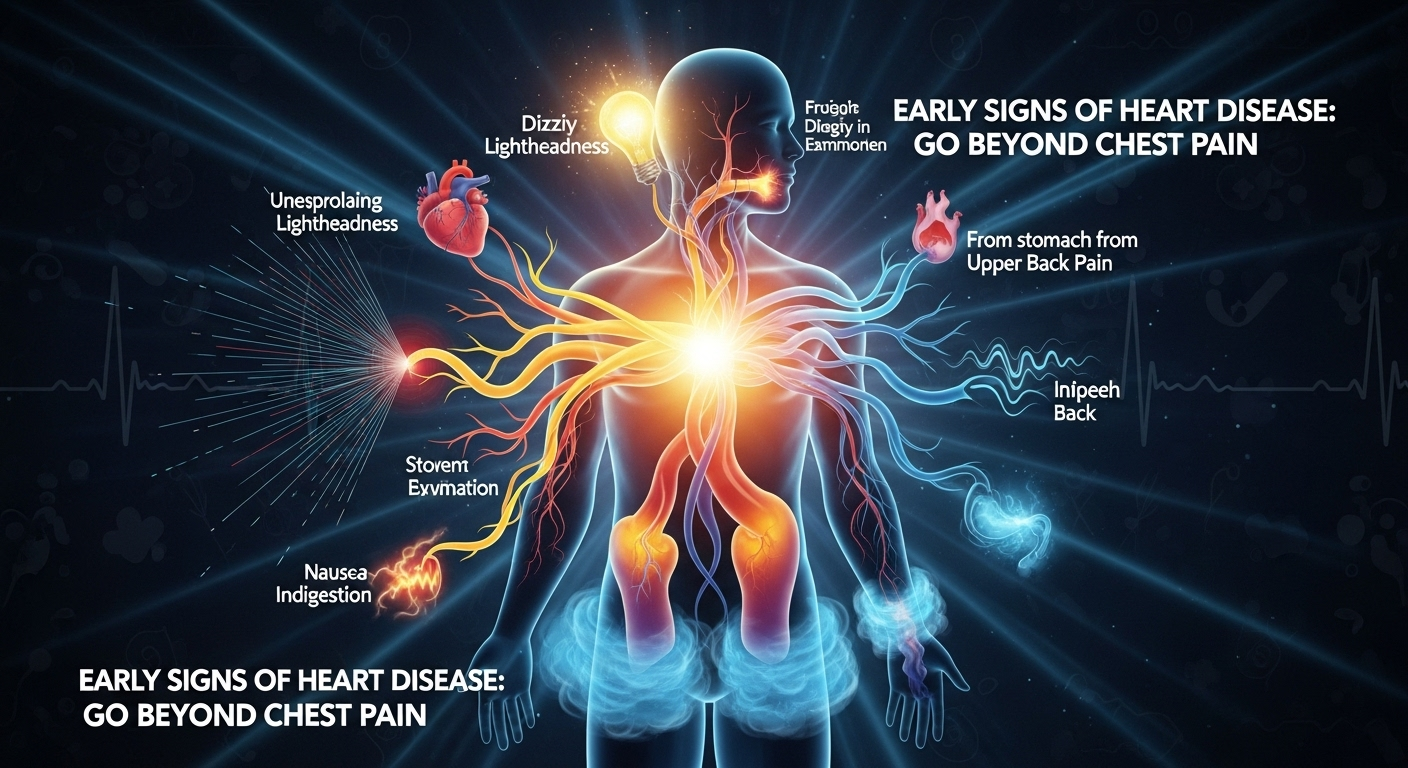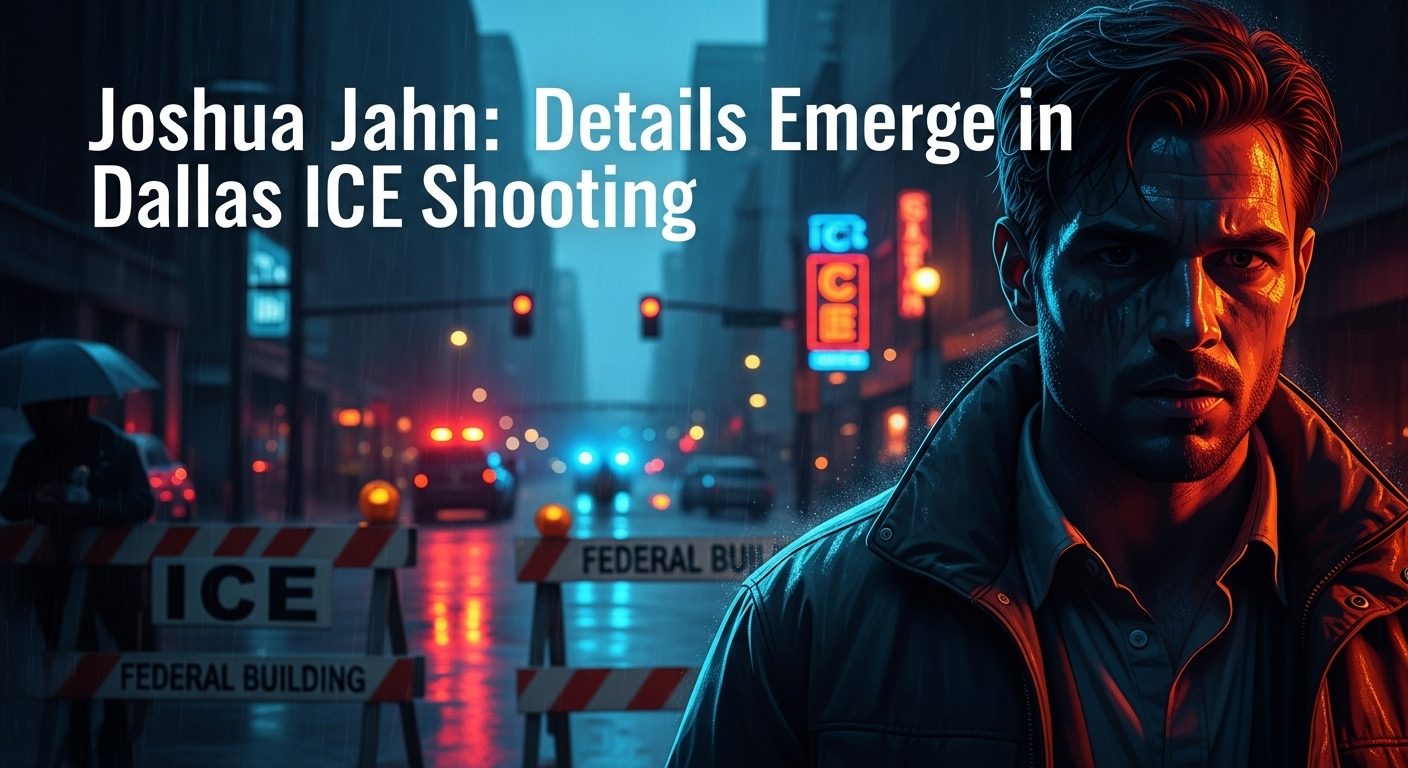When you think of a heart attack, the image that often comes to mind is a dramatic scene from a movie: someone suddenly clutching their chest in excruciating pain. While severe chest pain is a critical sign, relying on it as the only indicator of heart trouble is a dangerous misconception. Many cardiovascular issues build up slowly over time, sending subtle, often confusing signals long before a major event occurs. Understanding what are the early signs of heart disease is crucial for early intervention and prevention. These whispers from your body can be easy to dismiss as signs of aging, stress, or a bad night’s sleep, but they are your heart’s way of asking for help. This article will guide you beyond the classic symptom of chest pain to uncover the less obvious, yet equally important, early warnings of heart disease. The Classic Sign We Can’t Ignore: Understanding Chest Discomfort While this article focuses on the less-obvious signs, it’s impossible to discuss heart disease without first addressing its most famous symptom: chest pain, medically known as angina. It’s important to understand that angina doesn’t always present as a sharp, stabbing pain. For many, it feels more like pressure, squeezing, fullness, or a heavy weight on the chest. This discomfort occurs when the heart muscle isn’t getting enough oxygen-rich blood, often due to narrowed or blocked arteries (coronary artery disease). This sensation can be triggered by physical exertion or emotional stress and typically subsides with rest. However, there’s a more dangerous form called unstable angina, which can occur even at rest and is a sign of an impending heart attack. The pain might not be localized just to the center of the chest; it can radiate. Ignoring any form of chest discomfort is a significant risk, as it’s one of the most direct communications from your heart that something is wrong. Differentiating heart-related chest pain from other causes like heartburn, muscle strain, or anxiety can be challenging. A key difference is that angina is often related to activity. If your chest feels tight every time you walk up a flight of stairs but feels better when you sit down, that is a major red flag. In contrast, pain that worsens when you press on your chest or take a deep breath is less likely to be heart-related. Regardless, self-diagnosis is never safe. Any new, unexplained, or worsening chest pain warrants an immediate conversation with a medical professional. Subtle Signals: The Unexpected Early Warnings Your heart is the engine of your body, and when it starts to struggle, the effects can be felt in surprisingly distant and diverse ways. These symptoms are often the true “early” signs because they can appear months or even years before a cardiac event. Learning to recognize these subtle signals is like learning a new language—your body’s language of distress. Paying attention can give you the crucial head start you need to seek treatment and make lifestyle changes. Many people, particularly those who are otherwise active, might dismiss these signs as simply being “out of shape” or “getting older.” However, a sudden or unusual change in your body’s ability to perform daily tasks should never be taken lightly. Your baseline for what feels “normal” is your best guide. If activities that were once easy now leave you breathless or exhausted, your body is sending a powerful message that needs to be investigated. These early warnings are your cardiovascular system’s check-engine light. They indicate that the system is under strain and not operating at peak efficiency. The sections below will break down these specific signs, explaining why they happen and what they feel like, so you can be better equipped to listen to what your body is telling you. 1. Unexplained Fatigue and Shortness of Breath (Dyspnea) Feeling tired after a long day or a strenuous workout is normal. But the fatigue associated with early heart disease is different. It’s a profound, persistent exhaustion that isn’t relieved by rest. You might feel tired upon waking up or find yourself completely drained after simple activities like grocery shopping or making the bed. This happens because a weakening heart can’t pump blood as efficiently. To compensate, the body diverts blood away from less vital areas like your limbs and muscles to support critical organs, leaving you feeling chronically weak and tired. Similarly, shortness of breath, or dyspnea, is a classic early sign. You might find yourself gasping for air after climbing a single flight of stairs or walking a short distance. This occurs for two main reasons. First, if your heart can’t pump blood effectively to the lungs, it can lead to fluid buildup, making it harder to breathe. Second, your body isn’t getting the oxygen it needs, so your lungs work overtime to compensate. If you experience shortness of breath while lying down that improves when you sit up, this is a particularly concerning sign of fluid in the lungs (pulmonary edema) and requires urgent medical attention. 2. Pain and Discomfort in Other Areas The nerves from your heart share pathways with nerves from other parts of your body. When the heart is in distress, the brain can misinterpret the pain signals, causing you to feel discomfort in other locations—a phenomenon known as referred pain. This is why a heart attack doesn’t always manifest as central chest pain. Many people, especially women, experience pain in other areas instead of, or in addition to, chest discomfort. Common areas for this referred pain include: The jaw, neck, or throat: Aching or tightness in the jaw is a surprisingly common symptom. The left arm or shoulder: This is the most well-known type of referred pain, but it can also occur in the right arm. The back: Pain or pressure between the shoulder blades is another frequent sign. The upper abdomen: Discomfort can mimic indigestion or heartburn. The key is that this pain, much like angina, is often triggered by exertion and relieved by rest. If
Joshua Jahn: Details Emerge in Dallas ICE Shooting
Of course. Here is the SEO-optimized article based on your instructions. — The digital news cycle of September 24, 2025, was a stark reflection of a nation grappling with multiple, disparate realities at once. While breaking news alerts detailed a tragic shooting at a Dallas ICE facility that left a detainee named Joshua Jahn dead, the cultural discourse was simultaneously dissecting a controversial Jimmy Kimmel monologue from the night before. Elsewhere, in the world of sports, fans were eagerly anticipating the upcoming clash between Inter Miami – NYC FC, a testament to how life, in its many forms, continues even amidst tragedy. This complex tapestry of events—spanning from critical national security incidents to entertainment controversies and major sporting events—underscores the fragmented yet interconnected nature of modern information consumption, where a single day’s headlines can evoke a full spectrum of human emotion. In a shocking event that has once again placed the security of federal facilities under intense scrutiny, a shooting incident at a U.S. Immigration and Customs Enforcement (ICE) processing center in Dallas, Texas, has resulted in significant casualties. The event, which unfolded on the morning of September 24, 2025, has left one detainee deceased and two others injured, according to official statements. The deceased has been identified as Joshua Jahn, a name that is now central to a rapidly expanding federal investigation. The incident has sent ripples through the political landscape, igniting familiar debates about immigration policy, law enforcement, and the safety of both federal agents and those in their custody. The immediate aftermath saw a swift and massive response from local and federal law enforcement agencies, who quickly secured the perimeter and placed the facility on lockdown. The focus has now shifted from tactical response to a meticulous investigation aimed at understanding the motive and sequence of events that led to this deadly confrontation. As authorities work to piece together the timeline, the public is left with pressing questions about the vulnerabilities of such high-security locations and the circumstances that led to the tragic death of Joshua Jahn. This incident serves as a grim reminder of the volatile tensions surrounding immigration enforcement in the United States. Federal facilities like the one in Dallas are often flashpoints in a broader national debate, making them potential targets for violence. The Department of Homeland Security (DHS) and the Federal Bureau of Investigation (FBI) have taken the lead in the case, signaling the gravity of an attack within a federal jurisdiction. The coming days will be critical as more details are expected to emerge, shaping the narrative and the policy discussions that will inevitably follow. The Developing Investigation: Piecing Together the Tragedy In the wake of the shooting, a multi-agency investigation has been launched to uncover the full scope of the incident. Led by the FBI, in close coordination with the Dallas Police Department and the Department of Homeland Security, the inquiry is focused on answering fundamental questions: Who was the shooter, what was the motive, and how did a weapon get inside a secure federal facility? Investigators are meticulously gathering evidence, including surveillance footage, forensic data, and eyewitness testimonies from staff and other detainees who witnessed the chaotic event unfold. The process is deliberately slow and methodical, as releasing premature or unverified information could compromise the investigation or lead to dangerous public speculation. Law enforcement officials have been tight-lipped, providing only confirmed details such as the number of casualties and the identity of the deceased detainee, Joshua Jahn. This controlled flow of information is standard procedure in high-profile federal cases, but it also creates a vacuum that is often filled with rumors and unofficial theories on social media and across news platforms, adding another layer of complexity for officials to manage. The very nature of the location—an ICE detention center—complicates the investigation further. It requires investigators to navigate the sensitive environment of a facility housing individuals from various backgrounds, many of whom may be distrustful of authority. Gaining cooperation and credible accounts from a vulnerable population is a delicate task, but it is essential for establishing a clear and accurate picture of what transpired. The success of this investigation hinges on the ability of law enforcement to build a comprehensive case based on hard evidence, which will be crucial for any future legal proceedings and for implementing preventative measures. Official Statements and Eyewitness Accounts In the hours following the shooting, official statements began to paint a preliminary picture of the gravity of the situation. The initial confirmation came from ICE officials, who reported one fatality and two injuries among the detainee population. This was later followed by a strong denouncement from Department of Homeland Security Secretary Kristi Noem. Speaking on The Ingraham Angle, Noem condemned the violence against law enforcement and the breach of security, stating that authorities must do "everything" to ensure such an event never happens again. Her words underscored the high stakes involved and set a determined tone for the federal response. While official statements provide a framework, the granular details often come from eyewitnesses. Investigators are currently interviewing ICE staff, security personnel, and the detainees who were present during the attack. These firsthand accounts are vital for reconstructing the sequence of events, identifying the perpetrator(s), and understanding the dynamics within the facility leading up to the shooting. However, these accounts can also be contradictory and colored by the trauma of the experience, requiring careful corroboration with physical evidence and video footage to form a reliable narrative. The process of vetting these testimonies is a cornerstone of the ongoing investigation. The Victim: Who Was Joshua Jahn? At the heart of this tragedy is Joshua Jahn, the detainee who lost his life in the attack. As of now, information about him remains scarce, with authorities focusing on the criminal investigation rather than releasing personal details about the victims. What is known is that he was in the custody of ICE at the Dallas facility at the time of the shooting. His identity has transformed him from an anonymous





